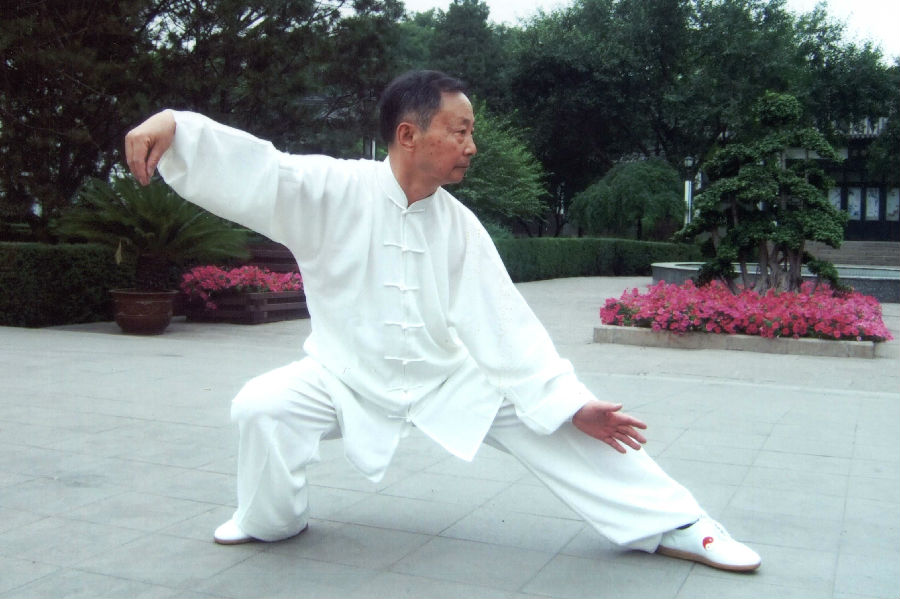Taijiquan
太极拳
Taijiquan has its original nicknames such as changquan, mianquan and bamenwubu etc. After the publishing of the book “On Taijiquan” by Wang Zongyue in the years of Qianjia in Qing dynasty, it gains the name Taijiquan.
太极拳原名长拳、绵拳、八门五步等,至清朝乾嘉年间王宗岳著写《太极拳论》后,世人才统一以太极拳名之。
“Taiji” is a term in the Chinese traditional philosophy. It comes from “The Book of Changes”. In the time of Song dynasty, the Neo-Confucianist Zhou Dunyi wrote the book “Theory of the Taiji Pictures” and draws “Taiji” into a shape of circle in his “Taiji Picture”.
“太极”本是中国传统哲学中的一个术语,源自《周易》。在宋朝时,理学家周敦颐著写《太极图说》,并在其所绘的“太极图”中把“太极”画成一个圆圈状。
The inventors of Taiji are enlightened by this picture and invent taijiquan with the continuous movement of drawing circles in the air as the constant movements,
受此启发,太极拳的发明者们,以双手画圆为太极拳贯穿始终的动作,
absorbing the skills of guiding the breath with the wills, using the stillness to control the motion in the traditional qigong and Taoist breathing exercises and combining the sets of other kinds of wushu.
同时吸取传统气功、导引术中以意引气、以静制动的功法,再结合其他拳术的击打套路,创制出了太极拳。

The most typical characteristic of taijiquan is to restrain hardness with softness. When taijiquan is being practiced, the movements are smooth and gently slow.It seems that it is of no aggression.
太极拳的最大的特点,就是以柔克刚。太极拳在演练时,动作舒展、柔缓,似乎不具丝毫攻击力,
But when the taiji masters are in actual combats, they will defeat the opponents cleverly with the gently slow movements and then strike with the borrowing of the opponents’ power and the sudden hardness.
但是,当太极拳手进入实战状态时,便会以柔缓的动作巧妙地化解对方的攻击力,然后借力打力,以突然爆发的刚劲,将对手击倒或击退。
It is proved by the modern medical science that long-time practice of taijiquan can improve the functions of people’s heart and lung, build up people’s physique and even make people live longer.
现代医学证实,长期习练太极拳,对于改善人们的心肺功能,增强抵抗力,甚至延年益寿都有显著的功效。
Now taijiquan is practiced and loved deeply by people all over the world.
目前,太极拳早已跨出国门,成为深受世界各地人们喜爱的一项运动。











